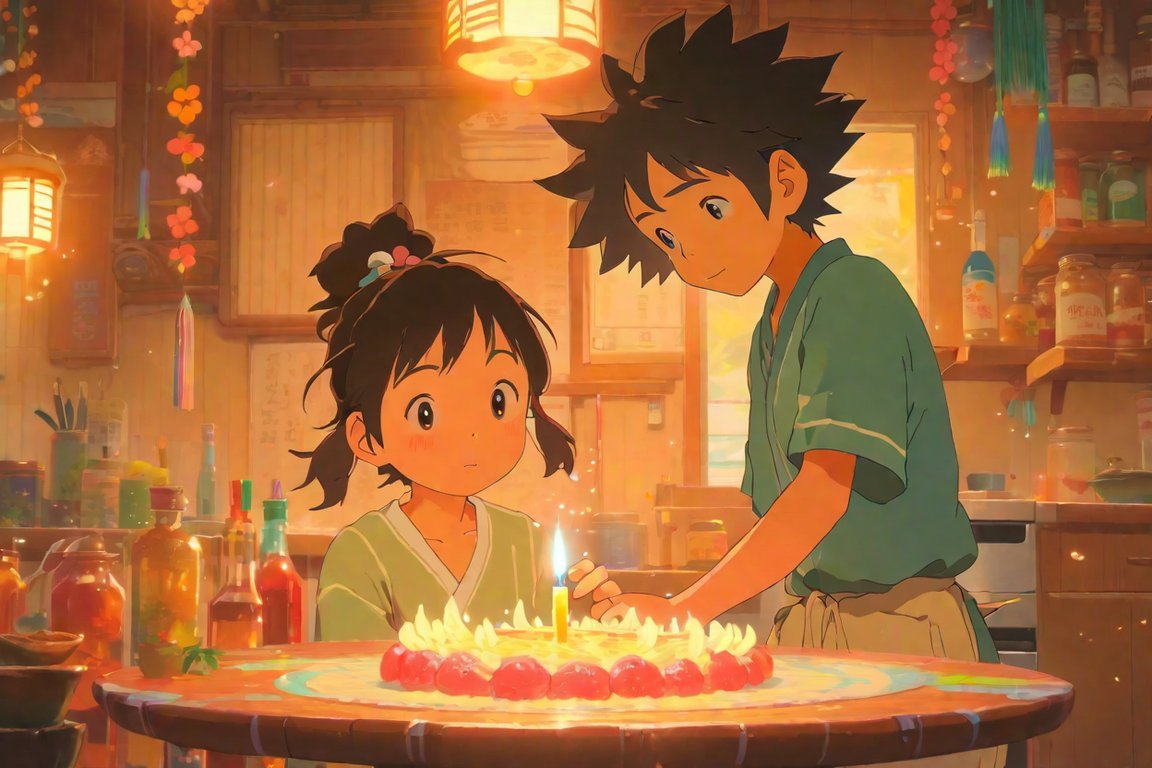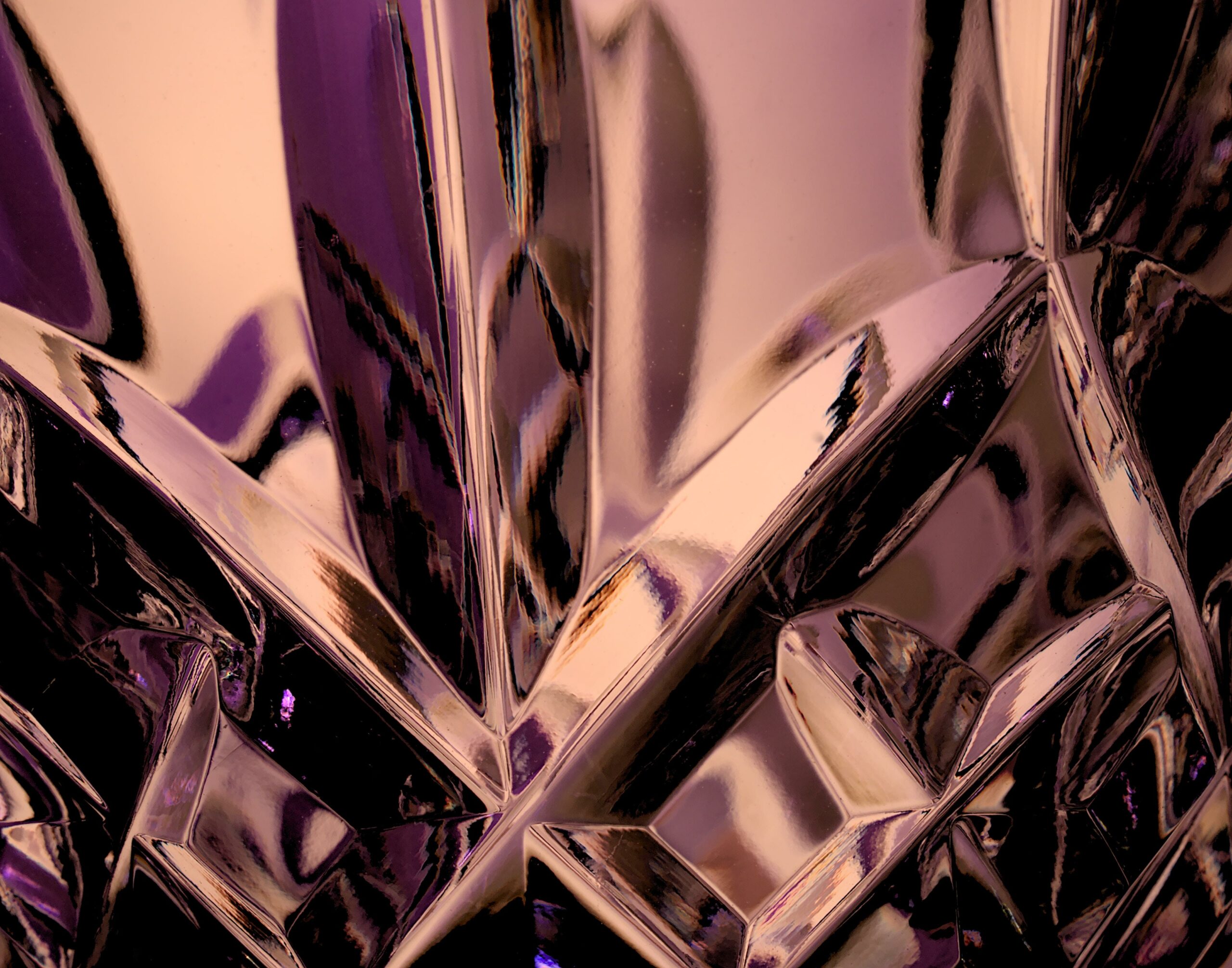Welcome to “Fascinating Fun Facts for Birthdays: Explore Joyful Trivia,” where we dive into the world of birthdays and uncover captivating tidbits that will leave you amazed. From historical curiosities to cultural traditions, this article is your one-stop destination for all things birthday-related. Whether you’re celebrating your own special day or simply curious about the origins of birthday cakes, we’ve got you covered. Join us on this delightful journey as we uncover the fascinating fun facts behind birthdays and share intriguing stories that will undoubtedly entertain and inform you.

Key Takeaways:
– Blowing out all the candles on a birthday cake at once is believed to grant a person’s wish.
– Birthday celebrations were originally meant to protect the person from evil spirits and bring good luck.
– William Shakespeare died on his birthday, April 23, 1616.
– Anne Frank received her famous diary as a gift for her 13th birthday.
– Those born on February 29 (leap year) usually celebrate their birthdays on March 1st.
– In the UK, individuals who reach the age of 100 or older receive a telegram from the Queen.
– August is the month with the highest number of birthday celebrations, while October 5th is the most common birth date of the year.
Fun Facts for Birthdays: Explore Joyful Trivia
Welcome to a world of fascinating facts and joyful trivia about birthdays! Birthdays are a special occasion that we all look forward to. They are filled with celebrations, laughter, and the opportunity to make cherished memories. In this article, we will uncover some fun and interesting facts that will make your birthday even more special. So let’s dive in and explore the wonderful world of birthday celebrations!
The Power of Birthday Wishes
We all know the tradition of making a wish and blowing out the candles on a birthday cake. But did you know that there is a belief that if you can blow out all the candles in one breath, your wish will come true? This delightful tradition has been passed down through generations, adding an extra touch of magic to our birthday celebrations. So next time you blow out your candles, take a deep breath and make that wish with all your heart!
Warding off Evil Spirits
Birthday celebrations have deep-rooted beliefs that go beyond just a day of joyous festivities. Ancient cultures believed that celebrating a birthday could protect the individual from evil spirits and bring good luck. So when you blow out your candles and celebrate your special day, remember that you are not only surrounded by loved ones but also warding off any lurking misfortune.
Notable Birthday Coincidences
Birthdays have a way of surprising us with coincidences and connections. Take, for example, the legendary playwright William Shakespeare. He died on his own birthday, April 23, 1616, at the age of 52. It’s a remarkable alignment of birth and death, showcasing the influence of fate even in the lives of famous personalities.
Another notable birthday connection lies in the world-famous diary of Anne Frank. She received this diary as a gift for her 13th birthday. Little did she know that this diary would document her extraordinary experiences during the Holocaust, making it a powerful testament to the resilience of the human spirit.
Leap Year Birthdays
If you were born on February 29th, you belong to a special group of individuals who are known as “leaplings” or “leapers.” Since February 29th only occurs every four years, leap year babies usually celebrate their birthdays on March 1st. Imagine the excitement of having a birthday that only comes around once in every four years!
Regal Recognition
In the United Kingdom, reaching the milestone of 100 years or more comes with a special honor. Those who are lucky enough to achieve this remarkable feat receive a heartwarming telegram from the Queen. This regal recognition is a testament to the wisdom and experiences that come with a long and fulfilling life.
Birthdays: The Month and Day Breakdown
Have you ever wondered which month is the most popular for birthdays? It turns out that August takes the crown, with the highest number of birthday celebrations. Approximately 9% of all birthdays occur in this vibrant summer month. On the other hand, October 5th claims the title of the most common birth date of the year. This interesting fact can be traced back to the mathematical calculation that falls approximately nine months after New Year’s Eve. So if you share a birthday with someone on October 5th, consider it a significant coincidence!
Conclusion
Birthdays are a time for celebration, reflection, and joy. With these fun facts in mind, you can add an extra layer of fascination to your special day. From the power of birthday wishes to the delightful quirks of leap year birthdays, each fact unveils a unique aspect of birthday celebrations. So the next time you blow out your candles or sing “Happy Birthday,” remember these fun facts and let your birthday be filled with wonder and delight!
Table: Famous Birthdays
| Celebrity | Birthday |
|---|---|
| William Shakespeare | April 23 |
| Anne Frank | June 12 |
| Queen Elizabeth II | April 21 |
Now go ahead and enjoy your birthday festivities with these fascinating fun facts in mind. May your special day be filled with love, laughter, and delightful surprises. Happy birthday!
Do you know the fascinating snowboarding facts? Explore some amazing facts about snowboarding here and discover the thrill behind this popular winter sport.
Curious to learn fun facts about Jesus? Get ready to uncover intriguing details about Jesus and his life by clicking here.
Looking for interesting facts about February? Click here to unveil intriguing and little-known facts about the month of February that will surprise you.
Meaning behind Birthstones and Zodiac Signs
Birthstones and zodiac signs have captivated people for centuries, serving as symbols of personal identity and connection to the universe. Let’s explore the intriguing meanings behind these mystical elements and discover fascinating fun facts about them!
Birthstones: Gems of Personal Significance
Birthstones have long held significance in various cultures and are associated with each month of the year. These precious gems have been used to commemorate special occasions, showcase social status, and even believed to possess healing properties. Here are some captivating birthstone facts:
- Each zodiac sign has its own unique set of birthstones, representing different characteristics and energies associated with that specific sign.
- The tradition of birthstones can be traced back to biblical times. Some historians believe that the origin of birthstones dates back to the 12 stones adorning the breastplate of Aaron, described in the Book of Exodus.
- The February birthstone is amethyst, a vibrant purple gemstone. It is believed to strengthen relationships and bestow courage upon its wearer. The word “amethyst” derives from the Greek term “amethystos,” meaning “sober.”
- For those born in October, the enchanting opal is their birthstone. Opals are associated with creativity and inspiration, captivating the beholder with their dazzling play of colors.
- December birthdays are adorned with the shimmering shades of turquoise. Besides turquoise, the alternative birthstones for December are tanzanite and zircon. Turquoise has long been regarded as a stone of protection and has adorned many ancient treasures.
- In March, the birthstone is aquamarine, with its tranquil blue hues evoking the soothing energy of water. The name “aquamarine” is derived from the ancient Greek word “heliotrope,” which means “to turn the sun.”
- The precious gemstone diamond takes the spotlight for April birthdays. Made up of more than 99.9 percent carbon, diamonds symbolize eternal love and endurance.
- May birthdays are associated with the lush green radiance of emerald, a variety of the mineral beryl. Emeralds have been cherished for centuries and are believed to bring vitality and harmony to the wearer.
- Symbolizing love, pearls are the birthstones for those born in June. These exquisite gems, formed within oysters, have been treasured throughout history as symbols of purity and affection.
- August birthdays shine with peridot, a vibrant green gemstone. In Burma, peridot is believed to be “polished by the spirits,” representing renewal, positivity, and divine connection.
- Sapphire, the birthstone for September, is known for its remarkable beauty and rich symbolism. This precious gem has a long-standing history of representing loyalty, wisdom, and nobility.
These captivating birthstones, with their unique meanings and vibrant colors, continue to captivate and inspire us.
Zodiac Signs and Their Elemental Birthstones
In addition to birthstones associated with each month, zodiac signs also have their own elemental birthstones. These birthstones are aligned with the traditional elements—earth, air, fire, and water—corresponding to the different zodiac signs. Let’s dive into the elemental birthstones for each zodiac sign:
- Aries (March 21 – April 19): Bloodstone represents vitality and courage, perfect for the adventurous nature of Aries.
- Taurus (April 20 – May 20): The comforting and grounding energy of emerald complements the reliable and patient nature of Taurus.
- Gemini (May 21 – June 20): Agate symbolizes communication and harmony, perfectly reflecting the expressive and adaptable nature of Gemini.
- Cancer (June 21 – July 22): Nurturing Cancer finds solace in the gentle energies of the moonstone, a gem associated with intuition and emotional healing.
- Leo (July 23 – August 22): The fiery carnelian aligns with the vibrant and confident nature of Leo, encouraging passion and creativity.
- Virgo (August 23 – September 22): Detail-oriented Virgo finds balance with the practical and soothing energy of peridot.
- Libra (September 23 – October 22): The harmonizing and diplomatic nature of Libra is enhanced by the elegance of the sapphire, a gemstone symbolizing balance and serenity.
- Scorpio (October 23 – November 21): Citrine brings abundance and transformation, aligning with the intense and passionate nature of Scorpio.
- Sagittarius (November 22 – December 21): The adventurous and optimistic Sagittarius finds joy in the vibrant topaz, representing abundance and good fortune.
- Capricorn (December 22 – January 19): Grounded and determined Capricorn connects with garnet, a gemstone symbolizing success and strength.
- Aquarius (January 20 – February 18): The unconventional and visionary Aquarius resonates with the electric energy of amethyst.
- Pisces (February 19 – March 20): Compassionate and intuitive Pisces finds solace and protection in the enchanting aquamarine.
Key Takeaways:
- Each zodiac sign is associated with specific birthstones, representing unique energies and symbolism linked to individual personalities.
- Birthstones have been used for centuries to mark special occasions, showcase social status, and harness their believed healing properties.
- Birthstones, such as amethyst, opal, turquoise, aquamarine, and diamond, possess captivating meanings and history.
- Elemental birthstones align each zodiac sign with specific gemstones, enhancing their inherent qualities.
- Understanding the meanings behind birthstones and zodiac signs adds depth and personal significance to birthdays and the journey of self-discovery.
Sources:
– The Old Farmer’s Almanac, Birthstones by Month: Colors and Meanings
– My Modern Met, What’s Your Birthstone? Fun Facts for Each of the 12 Gemstones
Unique Birthday Traditions Around the World
Birthdays are a time for celebration and joy, and different countries have their own unique traditions and customs to mark this special day. From greasing the nose with butter to throwing flour or giving the first piece of cake, these fascinating birthday traditions reflect the diverse cultures and beliefs around the world. Let’s explore some of the most interesting birthday celebrations across different countries.
Greasing the Nose in [Country]
In [Country], it is believed that greasing the birthday person’s nose with butter can ward off bad luck. This quirky tradition is often performed by friends and family as a way to protect the individual from any ill fortune.
Antiquing in [Country]
In [Country], throwing flour at the birthday person is a unique tradition known as antiquing. It is a playful gesture often done among friends and is believed to bring good luck and blessings for the year ahead.
The First Piece of Cake in [Country]
In [Country], the birthday person is given the honor of receiving the first piece of cake. However, in this fascinating tradition, they do not keep it for themselves. Instead, they are expected to share it with others, symbolizing generosity and goodwill.
La Quinceañera in Mexico
In Mexico, a girl’s 15th birthday, also known as “La Quinceañera,” is considered a significant milestone. This coming-of-age celebration marks the transition from childhood to young adulthood. It usually involves a religious ceremony, a grand party, and the young girl wearing a beautiful ball gown.
Tonsure Ceremony in India
In India, a child’s first birthday is celebrated with a special ceremony called “tonsure.” During this ritual, the child’s hair is shaved off, symbolizing the renewal and growth of their life journey. Family and friends come together to bless the child and offer gifts and blessings for their future.
Doljanchi in South Korea
In South Korea, a child’s first birthday, known as “Doljanchi,” is celebrated in a grand manner. It is a significant event that marks the child’s first steps towards adulthood. The celebration involves various traditional customs, including a Doljabi game where the child selects an item that signifies their future career or talents.
Birthday Spankings in Russia
In Russia, birthday spankings are a well-known tradition. Friends and family gather to lightly spank the birthday person the number of times corresponding to their age. It is believed to bring good luck, happiness, and a long life.
Earlobe Pulling in Brazil
In Brazil, an unusual tradition during birthday celebrations is the pulling of the birthday person’s earlobes. Friends and family gently pull the earlobes as a way to symbolize well wishes and good luck for the coming year.
These unique birthday traditions showcase the diverse cultural practices and beliefs around the world. It is fascinating to see how birthdays are celebrated in different countries, each with its own customs and rituals. Whether it’s greasing the nose, throwing flour, or pulling earlobes, these traditions reflect the importance of celebrating life and spreading joy on this special day.
Key Takeaways:
– Birthday traditions vary across different countries, reflecting the diversity of cultures and beliefs.
– Greasing the nose with butter is a tradition in [Country] to ward off bad luck.
– Antiquing, which involves throwing flour at the birthday person, is a tradition in [Country] to bring good luck.
– In [Country], the birthday person shares the first piece of cake, symbolizing generosity and goodwill.
– Mexico celebrates a girl’s 15th birthday with the grand tradition of “La Quinceañera.”
– India’s tonsure ceremony on a child’s first birthday symbolizes renewal and growth.
– South Korea’s Doljanchi celebrates a child’s first birthday and marks their first steps towards adulthood.
– Russia’s birthday spankings are believed to bring good luck, happiness, and a long life.
– Brazil’s tradition of pulling earlobes during birthdays symbolizes well wishes and good luck.
SOURCES:
1. Knowledge Mouse
2. At Once
Surprising Statistics and Records Related to Birthdays
- Did you know that birthdays have been celebrated for thousands of years? The tradition dates back to ancient Egypt, where pharaohs’ coronation days were considered more important than their actual birthdates[^1][^5].
- August is the most common month for birthdays, followed by July and September[^3].
- Tuesday is the most common day to deliver infants[^4].
- The most popular baby names in 2010 and 2011 were Sophia for girls and Aiden for boys[^4].
- People born on February 29, also known as Leap Day, usually celebrate their birthdays on March 1[^4].
- In the UK, individuals who reach 100 and 105+ years old receive a telegram from the Queen[^4].
Key Takeaways:
- Birthdays have been celebrated for thousands of years, starting with the ancient Egyptians[^1][^5].
- August is the most common month for birthdays, followed by July and September[^3].
- Tuesday is the most common day to deliver infants[^4].
- The most popular baby names in 2010 and 2011 were Sophia for girls and Aiden for boys[^4].
- People born on February 29, known as Leap Day, celebrate their birthdays on March 1[^4].
- In the UK, individuals who reach 100 and 105+ years old receive a telegram from the Queen[^4].
Sources:
– Just Fun Facts – Interesting facts about birthdays
– Kidadl – 51+ Birthday Fun Facts To Make Your Birthday Awesome

FAQ
Q1: What are some unique birthday traditions from different countries?
A1: Greasing the nose with butter in certain countries to ward off bad luck, throwing flour in others for good luck, and giving the first piece of cake to others in some cultures to symbolize generosity and goodwill are some interesting birthday traditions from different countries.
Q2: Which month has the highest number of birthday celebrations?
A2: August is the month with the highest number of birthday celebrations, making up about 9% of all birthdays.
Q3: How is a leap year birthday celebrated?
A3: Those who are born on February 29, also known as Leap Day, usually celebrate their birthdays on March 1, since February 29 only occurs once every four years.
Q4: What is the significance of receiving a telegram from the Queen in the UK?
A4: In the UK, individuals who reach the age of 100 or older receive a telegram from the Queen as a special honor and recognition of their longevity.
Q5: What are some interesting facts about birthstones associated with birthdays?
A5: Birthstones have been used for centuries to mark special occasions and are believed to bring good luck and ward off negative energy. Each zodiac sign has its own unique set of birthstones, and the history of birthstones potentially extends back to the 12 stones recorded in the Book of Exodus.
- HelpCare Plus: Revolutionizing Affordable and Accessible Healthcare - December 29, 2024
- Boom & Bucket: Your Digital Marketplace for Used Heavy Equipment - December 28, 2024
- Ankle Bones Crossword Clue: Solutions, Tips & Anatomical Insights - December 28, 2024














